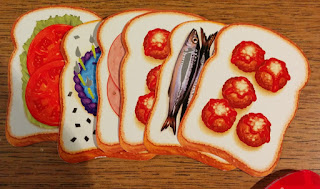“The greatest job is the one where you make yourself superfluous.”
-- Transcendence Express
After the nightmarish human-eating of The Bird Catcher, we move on to more straight up science-related concepts. Transcendence Express, as you might guess, deals with human transcendence. In this case, via biologically-grown quantum machines. I could get into that.
 |
| Apex Book of World SF, edited by Lavie Tidhar |
Let’s All Talk About the Biological Computers
Technology is the focus and the folks in this story are an afterthought.
The best way for me to describe De Vries’s character development is comparing it, for good or ill, to the work of Isaac Asimov. Think back to any of Asimov’s Robot stories, where one engineer is having a conversation to another engineer about recent robot developments. What do the engineers look like? Who cares! Tell us more about the robots!
Instead the human beings serve as a framework to show the scientific revolution taking place. There’s no changes in personality or evolution of character, both are pretty static when they aren’t having weirdly awkward personal moments.
Your Childhood is Obsolete
Transcendence Express imagines a discovery allowing complex quantum computing devices to be grown out of common easily-available chemicals.
The action happens in a third world village, with a couple of Dutch teachers showing the kids how to make their own wooden cases for receiving the developing computational goo.
Is this a disruptive revolution? It must be, but the reader is left to imagine most of it.
Other than one kid getting upset because his father won't alter the traditional planting schedule, we are left to wonder where the world will be after a year or two of biological enhancement.
Will the AI's be running the show? Certainly this is the most efficient outcome, even the most friendly to the humans if they get a better yield out of the deal.
Looking to the Future Of World Speculative Fiction
Transcendence Express is forcing a disruptive revolution on a personal level: I'm wondering if I picked the wrong book off the shelf to start my review series. Perhaps I should pick a story I've already read before committing to writing a review of it?
I think the only way to determine an insurmountable failure is to do it one last time.
If the next story strikes out, I'll try to switch to something else. Because that's how they do it in baseball, so it must be right.
See everyone next time when we explore:
The Levantine Experiments
by Guy Hasson




